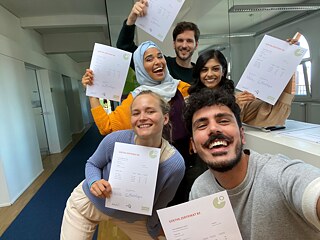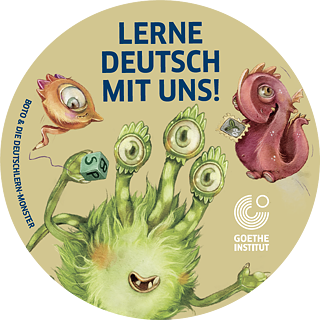Language Certificate
New routines for exam prep

Are routines boring? Not in the least! They can help structure our everyday language-learning efforts and are an important and effective process in natural learning. So, encourage your learners to make a daily habit of reading or listening to the morning news, a podcast in the afternoon and watching documentaries in the evening on a wide range of different subjects – in German of course! Working authentic materials into your learners’ everyday lives is the best preparation for the Goethe, telc and ösd C1-level exams.
By Irene Martius
Learning from authentic materials
C1-level German learners should be able to understand and participate in discussions about social issues. Using authentic materials in class will help your learners prepare for the oral and written parts of their exams by improving their language skills and their command of the subject matter. Authentic materials help by enriching their vocabulary and giving them a better grasp of the current issues addressed in their listening and reading assignments.So here are a few “teaching hacks” to help get your learners using authentic materials on a daily basis:
Making apps, audio & media libraries, and AI tools everyday companions
German public broadcasters like ZDF, ARD, Deutsche Welle and Deutschlandfunk provide professionally produced and commercial-free content. Their interviews, reports and talk shows are valuable resources and an effective way of honing the following specific skills:- Pronunciation and intonation: regular immersion in speech melody
- Overall comprehension: identifying and noting thesis and arguments
- Selective comprehension: repetitive listening and rereading help learners “get” details
Hack 1. Push messages
Subscribe along with your learners to push notifications from news apps to receive daily reports, which will automatically broaden their knowledge and give them some practice in overall and selective reading comprehension. Use current “hot” topics for classroom discussion purposes. Learners can exchange arguments and opinions, learn from one another, and work on overcoming inhibitions about speaking up in class – all of which is a good basis for passing the oral part of the exam.Hack 2. Audio and media libraries
Use podcasts and videos from major broadcasters’ audio and media libraries to practise listening comprehension. Some podcasts (e.g. from Deutschlandfunk) are subtitled. And some videos come with subtitles in various languages, which helps with comprehension. Listening to and watching talk shows and interviews also helps in training rhetorical and argumentation skills for the written and oral modules. Make sure to cover a variety of current political issues and (popular) science topics. The more regularly you use these media in class, the more likely your students are to work them into their daily routines.Hack 3. Generative AI tools
Free AI models like ChatGPT 3.5 (OpenAI), Gemini (Google) and Bing Copilot (Microsoft) are perfect tools for working on vocabulary. They explain words and complex expressions, give usage examples and synonyms, and even draw up quizzes on the material covered. AI tools can rapidly generate exam-style questions about authentic texts, including cloze (i.e. fill-in-the-blanks) texts, multiple-choice questions and reading comprehension questions. Translation tools and AI editors like DeepL Write suggest ways of improving self-written texts, while AI-supported conversations with AI writing assistants can enhance the style of the writing and even promote critical thinking by coming up with endless new arguments. The podcast “Felix & Sally” will give you an idea of what it’s like to converse with AI Sally, and you can have your class try out a similar experience. But make sure the AI assistant only serves to help your learners learn – and never detracts or distracts from learningHack 4. Multisensory learning through integrated media projects
Learners use a combination of the above-mentioned tools (Hacks 1–3) to create group projects: podcasts, video clips, reports, talks or blog posts on a subject of their choice. Have them incorporate information drawn from push messages, podcasts, videos and/or AI-assisted research (tip: Microsoft Bing provides source information, which makes it easier to verify). Combining visual, aural and cognitive learning techniques helps towards a deeper understanding and better retention of learning content. Learners benefit from a holistic approach that engages a range of channels.Goethe-Institut’s new modular C1 exam

